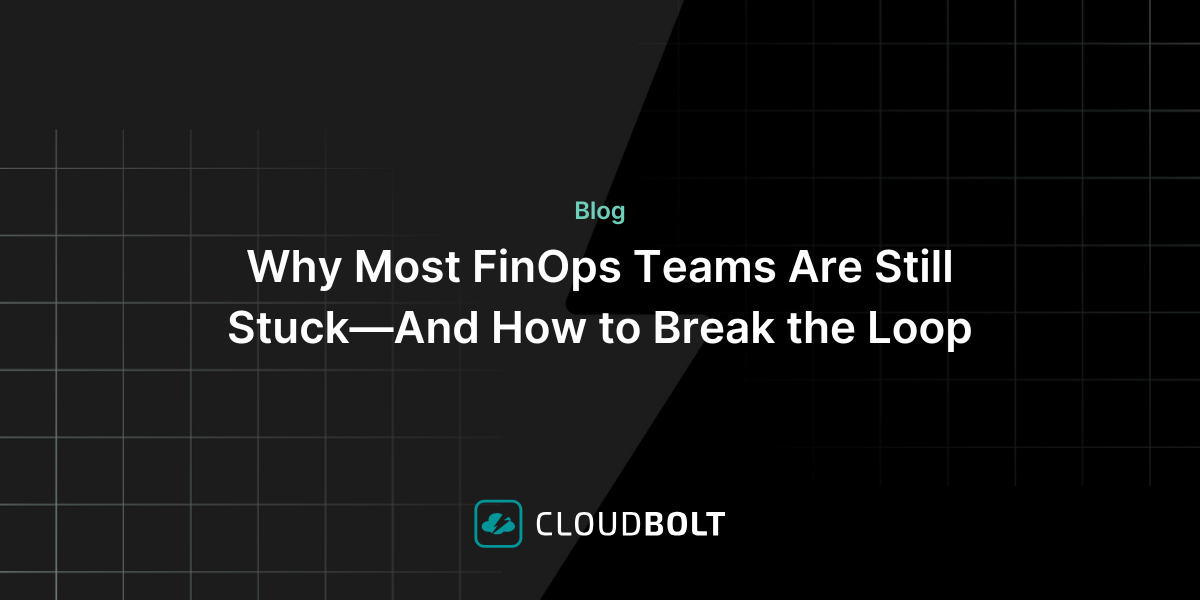3 Ways to Alleviate Enterprise Hybrid Cloud and Multi-Cloud Anxiety
Cloud Anxiety to Confidence
A few years ago, many of us snickered about IT initiatives and going to “The Cloud.” There was something catchy and mysterious about it—even over-pronouncing it like, “We’re moving to the Clooooo a dah.” My IT friends are probably now smirking when they see I’m at CloudBolt.
Cloud anything was being hyped everywhere and is still going strong. Anyone remember going from Microsoft Word and PowerPoint installed locally to Office 365? That was about five or six years ago to put cloud strategy adoption in perspective.
Initially, enterprises felt uncomfortable “moving to the cloud.” Some still do. There’s a lot of uncertainty about cost, performance, integration, control, and security. I remember attending Microsoft Ignite last year and hearing a few stories about some larger organizations who let their developers move to the cloud and ended up moving stuff back on premises, or others that got in deep trouble for spending too much. They had to reign the initiatives in and reconsider their approach.
For more fortunate enterprises, effective cloud adoption strategies have helped them disrupt almost every market—how we book travel, get around with rideshare, order food online, or even process home mortgages. It still amazes me that I can take a picture of a check and get it deposited in my account so quickly. The reality is that these enhanced customer experiences exist because a well thought out hybrid cloud strategy has most likely been put in place to run parts of the overall end-to-end delivery of these applications.
The mandate to move to the cloud is a top-down initiative that many IT leaders face while the “what, where, and why” is rapidly changing. Multiple vendors competing to offer cloud services as well as new technologies like containerization make it hard to keep up.
Hybrid Cloud and Multi-Cloud Strategies
Here are three important answers to questions related to enterprise hybrid cloud and multi-cloud cloud strategies to help alleviate any anxiety—even the snickering that some of us still do.
1) How do you explain cloud computing and what hybrid cloud, multi-cloud, and private cloud and public cloud mean?
Cloud computing is simply running digital assets in an environment that is not hosted by infrastructure local to the users of the assets. Think of it as anything that runs somewhere else but you can access it typically by a network connection to a private or public network. We log on to our email accounts that are managed somewhere in “the cloud,” as opposed to legacy email servers hosted by local IT administrators. Someone in IT could physically show you those corporate email servers in some “on-premises” server room closet. Shhhhh, some folks are still doing it that way. The disruptors are not.
Hybrid cloud is typically referred to as a platform where your strategy is to run digital assets from a combination of on-premises infrastructure and some assets from public or private cloud environments. A common hybrid cloud deployment is to have application servers and web servers that are load balanced and running in the cloud, while the backend databases are hosted on premises for the specific applications or services running in the cloud.
To be even more specific, solution architects consider that a hybrid cloud platform is orchestrated to use certain resources from the cloud vs. on-premises elements based on conditions. For example, when demand increases, some of the computing resources could be dynamically provisioned to the cloud to handle the spike. Having this visibility and control is what some enterprises consider the holy grail—right-fitting all the resources at the right time for the right usage demands and not sacrifice performance or overspend.
Public clouds and private clouds are just as implied. Public cloud resources are available through the public internet and often include proprietary solutions that are marketed and sold by vendors to scale with your demand, while private clouds are only accessed by a private network that no unauthorized users can access or use.
Multi-cloud is a combination of everything. You could say that a multi-cloud strategy considers a range of options from cloud providers to develop a hybrid cloud platform. You could switch from one public or private cloud environment to another for a hybrid cloud strategy. Having a mix of enterprise Software-as-a-Service (SaaS) applications that run key elements of the enterprise such as sales, marketing, customer support, and HR functions is considered a multi-cloud strategy.
2) How do enterprises consider costs associated with hybrid cloud and multi-cloud strategies?
Enterprises typically consider their cloud assets as part of the operating expense (OpEx) for doing business and can fluctuate from month-to-month based on usage.
On-premises infrastructure assets are part of the capital expenditure (CapEx) for an organization and are part of a budget on a yearly basis.
When doing business, you might think that the on-premises portion of costs as spending a lot of money at first to get started. Once you’re up and running, you don’t have to pay that much. It’s like having your own bike vs. renting one on a daily basis. You typically have to pay several hundred dollars to buy a bike (CapEx). Once that’s done, you can ride your bike any day without paying anything. On the other hand, instead of paying that money up front, you can just pay a little each day to ride a rented bike and only use it when you need it (OpEx). When you’re not using it, you don’t have to worry about storing it.
Specifically for business functions run by SaaS applications and their costs, enterprises will compare costs among cloud providers to choose a provider and weigh the cost of owning the infrastructure that is running on premises vs. that which can be “rented’ by a public or private cloud provider.
Where it gets a bit complex—but worth considering for enterprise cloud adoption—is optimizing a hybrid cloud environment so that the cost of infrastructure is more closely aligned with usage and benefit.
- If you over-provision the resources needed to run your business, you will have paid excess money to run something that could have cost a lot less in some cases.
- Conversely, if you have too few resources provisioned, your business could suffer from a loss of customers because something you’re offering is too slow or even broken.
Sometimes it’s worth it to pay for on-demand resources from a cloud provider that are only used when needed—you don’t lose business by paying the premium. In the meantime, you’re not overspending on the idle resources that could be running without the demand.
This hybrid cloud optimization from properly orchestrated resource can be the differentiator that separates who is successful and who is not.
3) What about the performance, security, and control for hybrid cloud and multi-cloud strategies?
Enterprises know that if they want complete control and security of their digital assets, then adopting a cloud strategy is not the way to go. Several years ago, governments and most large enterprises would not even consider cloud strategies primarily because of the loss of control. They also wanted to closely monitor the performance based on their own service level agreements (SLAs).
That is changing. There are now Department of Defense (DoD) cloud resources available on AWS, Azure, and Google Cloud. These vendors all claim that because of automation and auditing processes available in these environments, compliance and security might even be more “hardened” in their hosted environments.
Some SaaS providers will provide an SLA agreement for their enterprise customers, similar to what the enterprise would have for the IT services hosted in house. These SLA agreements can guarantee uptime, availability, data rates, and anything measurable. Some IT departments use that criteria for selecting a SaaS vendor to use instead of a solution they used to have more control over in the past.
We’ve learned a lot about clouds along the way and it’s only going to keep changing. The competition for offering technology and solutions in the cloud is just ramping up for massive adoption from enterprises. Digital transformation initiatives from these enterprises that boost the most effective use of The Cloud will continue to be the factor that separates whether companies thrive or die.
Related Blogs

What We Learned at FinOps X 2025: From Dashboards to Decisions
At FinOps X 2025, one message echoed across sessions and conversations: FinOps is growing up. The scope is expanding. The…

